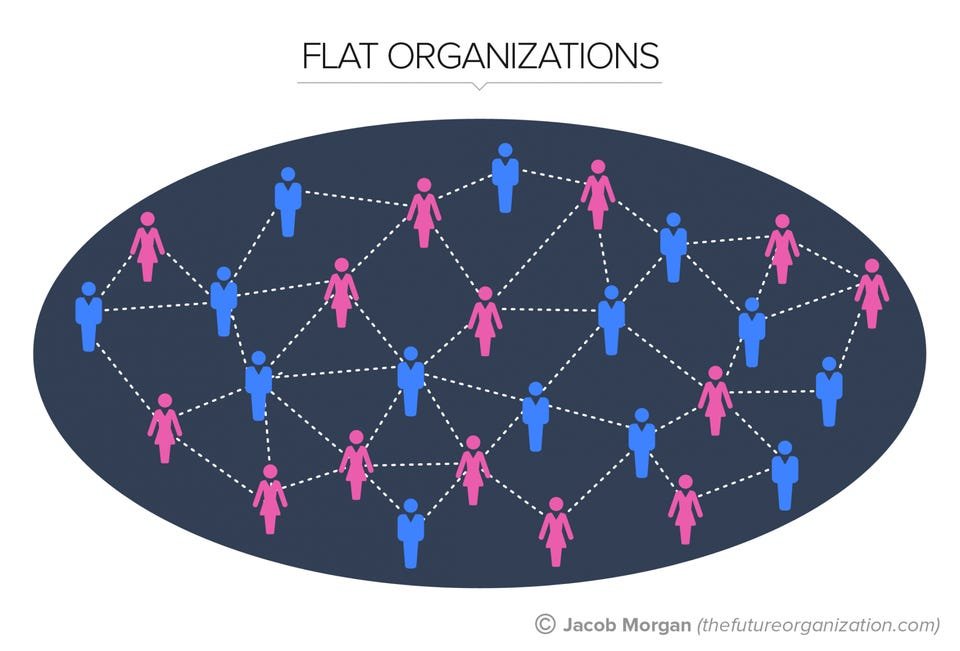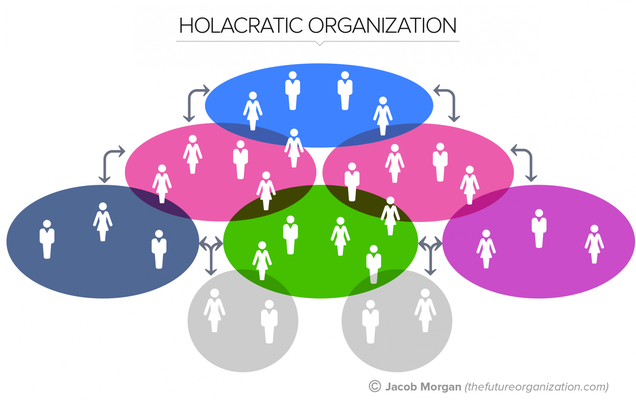Organizational Structures
Subject: Business
Objective: By the end of today’s lesson students will understand the nature of modern organizational structures in today’s business landscape
Intro
Businesses are often complex, and they exist in dynamic environments which call them to respond effectively in order to set themselves apart. So then, with that in mind, we come to the question, how does a business set itself up to be successful, or to stand out from others? Often it’s a matter of adapting an effective organizational structure. There are different schools of thought as to how many forms there are, most point to three typically: Hierarchical, Flat and Matrix. While from time to time someone decides to invent a new form of the wheel, claiming that flat organizations will never work, or something to that effect, generally there are three (really two with one adaptive construct) which have been recognized throughout recent history. For your reference here are the three TRADITIONAL WAYS THEY ARE CATEGORIZED:
In that format a Hierarchical would typically be used in a large company where each respective level would be one reporting vertically, with limited scope of control, and a chain of command structure similar to that of the military or a paramilitary organization. Clear purview is established for praise and punishment when things go right and wrong respectively, or when things need to be managed, but unless expressly designed for dynamic response environments such structures often struggle with extreme shifts as decision-making is convoluted in the often bureaucratic processes.
In a Flat organizational structure there are much less by way of levels of hierarchy and far greater control in the individual positions. It’s not often that such organizations are as restrained by bureaucracy, as this would hamper them, they favour communications between managers and employees directly. However, individuals carry greater responsibility in the decisions that they make and thus greater risk. Creatively-minded individuals tend to favour such environments. It’s also often seen in smaller organizations such as startups as it is easily adaptable, and suited to those who are intimately familiar to the project or perhaps playing more than one role. If however the staff are inadequately trained then this structure is a poor choice.
The final structure in a traditional approach is a Matrix. The simplest way to think of a matrix organizational structure would be to consider it as a ‘special team.’ A matrix can exist in either a flat or a hierarchical organizational structure, and in a matrix a collection of employees with specific backgrounds suited to solve a targeted problem are brought together to address and focus upon that objective until such time as the objective is achieved. Once the goals are met, or the projects are completed, the matrix is dissolved or disbanded.
However, the approach we’re going to explore draws from a book called The Future of Work: Attract New Talent, Build Better Leaders, and Create a Competitive Organization by Jacob Morgan as featured in Forbes. This approach explores it from an approach which includes 1. The Traditional Hierarchy, 2. Flatter Organizations, 3. Flat Organizations, 4. Flatarchies, 5. Holachratic Organizations.
Traditional Hierarchy
“It is the structure of the organization, rather than the employees alone, which holds the key to improving the quality of output.”
By a landslide, the most commonly well-known historically speaking is the hierarchical organization. This is one recognized by a distribution of power in a linear chain of command. In such a structure it is common to see the use of titles/ranks, committees, and communication is linear, often slower as bureaucracy dominates the landscape. The processes and administration are there as much to protect the organization and its individuals as it is to enable the success of its objectives. However, as time passes and organizations grow or legislation/oversight grows more complex, change or innovation tends to be slow.
The different levels of a hierarchical business signify measures of importance in the business and their respective responsibility. The lower the person is working, the lower their assigned responsibility tends to be, and often the lower their respective pay - unless they are some form of specialist such as a scientist or engineer. Team leaders operate above them, performing day-to-day managerial roles, with operational managers establishing overarching business strategy and direction, and ensuring that all actions adhere to organizational mission, vision, and values, etc.
There is very little true collaboration in such a model, and competition for talent is incredibly fierce which is why talent retention is very difficult.
2.Flatter Organizations
Flatter Organizations favour communication more than traditional hierarchies do by virtue of the fact that they are less linear than traditional hierarchies. They also tend towards collaboration through not regimenting chain of command structures inherent to more military and paramilitary organizational structures. Above all this requires a full top-down organizational understanding that employees choose to be a part of the business, that they are an asset (remember the Richard Branson reference in the previous lesson?) and that their loyalty and decision to remain is valued. Respect and authority should be extended thus downwards from above as a result to reward the decision to extend and enable relationships and facilitate retention. Further, with the lessening of levels we see that there becomes more responsibility and freedom for decisions at each level, enabling each individual. In such a model there is far less push downwards of company expectation and far more freedom of decision-making, flexible work arrangements, etc.
3. Flat
In a Flat Organization it’s… well… flat. Theoretically everyone is equal, and nobody should have any advantage above anyone else by way of title, power over another, etc. Jacob Morgan points to the company Valve, a gaming company who makes a number of successful games including Half-Life, Portal, Counter-Strike, etc., and notes that if they want to create anything, they are tasked with coming up with their own teams, funds, plans, and everything else involved, but essentially nobody holds any supervisory power over anyone else. Truly, one might flourish in such an environment… but others… not so much. One issue with such a model is it certainly would not work for everyone, meaning it definitely would not be a scalable model. If it’s not scalable, then it’s not a model which would function for a larger organization. Morgan points to issues such as accountability, reliability, lack of structure, cliques, communication, collaboration, among other issues.
4. Flatarchies
These are something Morgan describes as somewhat as a mix between flat and hierarchies (honestly, I’m just a high school teacher, hosting this page actually costs me money and I make no profits off of these links, but I recommend you just check out some of his stuff). Effectively they have a defined hierarchical structure with adapted flat teams or vice-versa. The adaptable nature enables them to bob and weave in more dynamic environments, or to adjust to market demands, consumer trends, resource shifts, etc. However, Morgan points out that “a flatarchy is to be though of as a more temporary structure which creates isolated pockets of new structures when needed, such as in the case of developing a new product or service.”
5. Holacratic Organizations
The overarching concept behind Holacratic Organizations is one of distributed decision-making. Morgan describes it as follows:
“The basic goal with this structure is to allow for distributed decision making while giving everyone the opportunity to work on what they do best. There is still some form of structure and hierarchy but it’s not based on people as much as it’s based on circles or what most people would think of as departments. Information is openly accessible and issues are processed within the organization during special and ongoing meetings.”
Effectively it’s like saying that you recognize that you have skills in one area that may be particularly developed, and that the organization would benefit from retaining and continuing on with those skills while still reaching out for your input with regards to other decisions. He notes that scalability might not be feasible beyond that of a medium-sized organization, as things like sheer employee numbers and structure might be issues, but at a smaller scale it has its merits. He also suggests that he will have further media developed with visuals to support, so I suggest you check out his site and see what else he’s developed on the matter.
Credit where credit’s due…
I want to be clear, I do not profit from this website, nor from any of the learning material on it. It is developed entirely as a teaching aid and reference material for students/other teachers to use. With that said, I feel that Mr. Jacob deserves at least credit for the content in this piece given that it is a reflection of his work, and so I’d like to very much encourage you to at least read his other work on his website. Again, I receive no remuneration from this nor any link on the pages herein.






